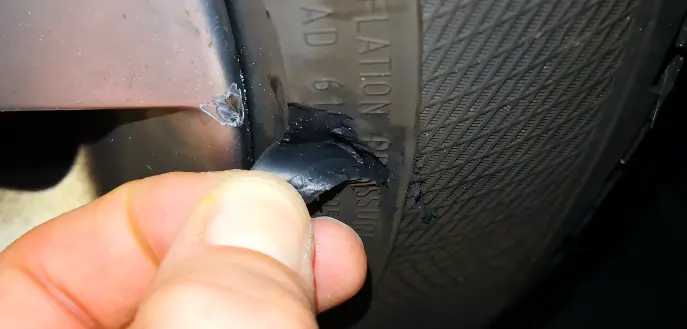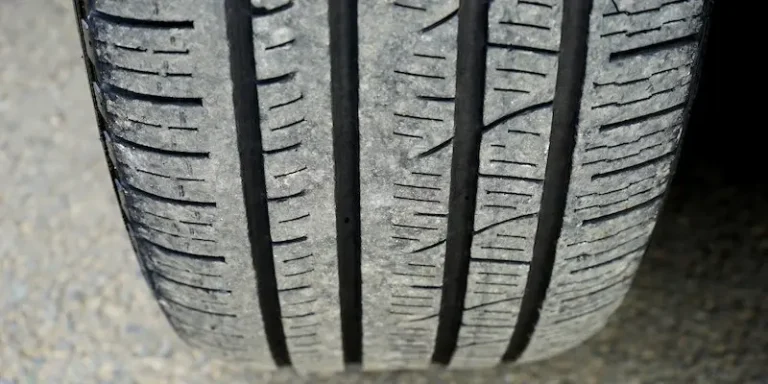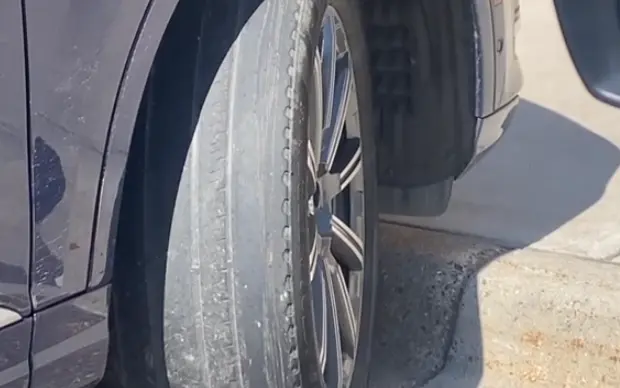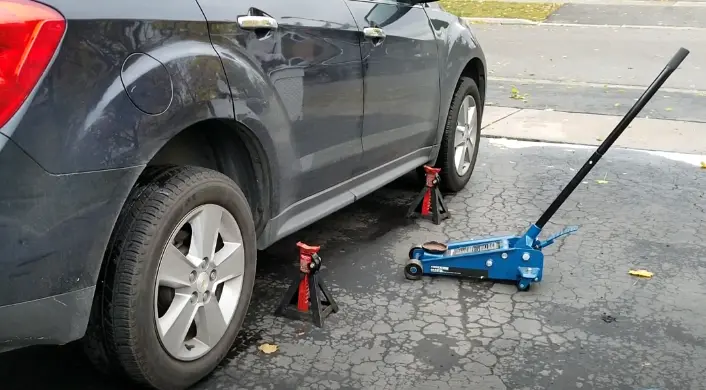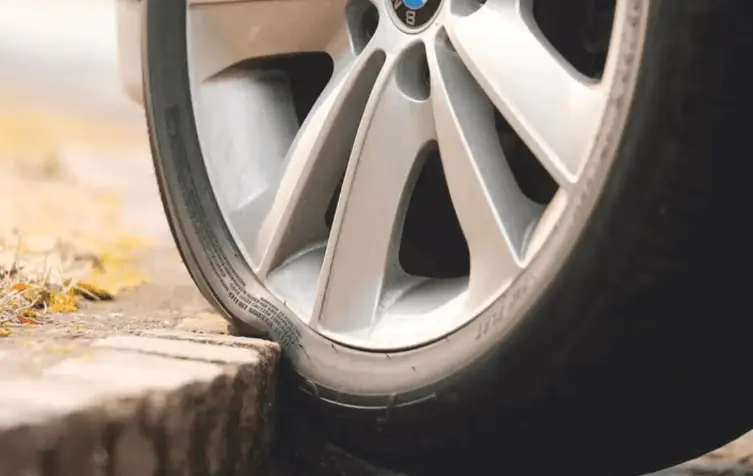Bulge In Tire – Causes & Fixes
A bulge in tire is a change in the tire shape in the form of swelling and causes bubbles on the sidewall, sometimes on the tire’s tread.
These bulges in the tire pop up gradually and become prominent after frequently driving on the damaged tire. Going on a tire with a bubble isn’t secure and can cause a tire to burst at any time.
A tire bulge is caused by hitting a curb, pothole, or debris. If you notice a bump, bubble, or tire lump in your vehicle’s tire, this indicates the tire change.
Read on to discover the damages, causes, and precautions to avoid the tire bulge or tire blister.

Damage of bulge in tire
A bulge can cause irreversible damage to your vehicle’s tire. You can feel shaking and vibration while driving your car. Damage due to a bubble will output in replacing the affected tire with a new one for a secure and safe drive.
bulge in tire sidewall
The bulge in your tire sidewall is, in fact, the air coming from the inner liner to the topmost surface. The inner liner of the sidewall gets punctured and initiates a space between layers in the sidewall when the sidewall damage affects the tire, resulting in a conspicuous bulge or bubble.
If there is a bulge on your tire’s sidewall, you shouldn’t drive on this tire because a bulge or bubble on a tire sidewall means this tire is weak and fragile and can cause it to explode.
bulge in tire tread
The broken steel belts between the tread and the body plies can cause a bulge in the tire tread, and air coming from the inner layer to the outermost tread forms a bubble. The bulge in the tire tread is easy to figure out because you feel like bumps on the road, and it’s challenging to drive with a bulge in the tire tread.
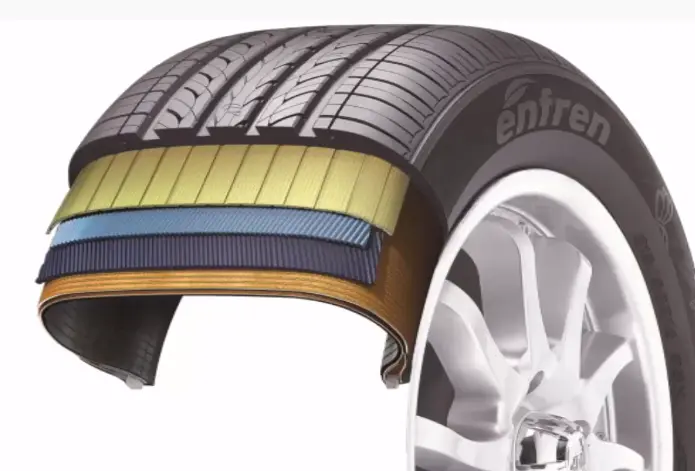
Cause of a bubble in tire
- After some usage of the tire, the inner plies and steel-belted structure can be damaged, and can cause a bulge in the tire. There are numerous factors, that can cause a bulge in a tire.
- Driving on low air pressure, can cause a tire bulge due to damage to the fiber structure of your tire.
- Hitting a curb, pothole, or construction debris can also cause a car tire bulge. Sometimes it appears quickly, but occasionally pops up after a day.
- In very rare cases, it can be a manufacturing fault.
- Overloaded commodities, or people for a long time can also cause a tire bulge.
- Improper tire patching can also cause a tire bulge, because of excessive grinding, the patching area becomes thinner than other tire locations.
- A car accident also causes a tire bulge, if your tire hits badly.
Is it safe to drive with a bubble in tire
When you locate a bubble in your tire, you shouldn’t drive with this tire. Driving with a bubble in tire can cause a severe accident, particularly when driving at high speed.
Tires must always be round and smooth, but a tire with a bubble can’t be smooth and round, so if you find there’s a bubble in tire, immediately stop driving and replace this tire for a secure and smooth drive.
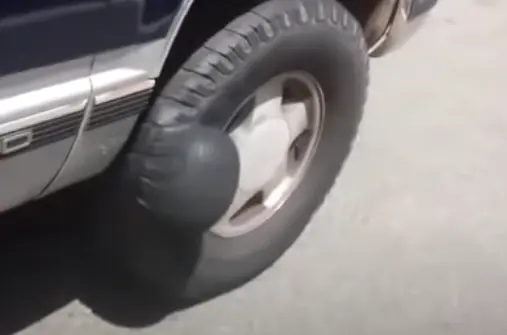
Fix a tire bulge
If you’ve found a bugle in tire, then the most suitable solution is to replace this tire with a new one because the tire with a bulge is a clear sign of tire expiry.
However, if you’re driving on the road, find a tire bulge, slow down the speed, and go to the nearest shop, avoiding potholes, debris, and obstacles.
Park your vehicle in a sunless place. Choose genuine products, and avoid buying poor-quality tires.
Precautions to avoid bubble in tire
You can avoid a tire bulge if you follow some helpful tips. It’s very easy to follow these precautions, which will assist you in preventing the tire bulge.
- Always avoid potholes, debris, and obstacles while driving, particularly at high speed, because any hit to potholes or obstacles at high speed can cause a tire bulge.
- Regularly check the tire pressure, and don’t inflate too much. Inaccurate tire pressure leads to tire bulge.
- Always park your vehicle in a shady place, and avoid parking in the hot sun for a long time.
- Always try to carry heavy goods as per the tire weight category, and don’t overload your vehicle.
- Choose genuine brand products while changing tires, and don’t choose poor quality products. The tire bulge risk can be reduced by choosing brand tires.
- Don’t drive on an inflated tire because all the vehicle load will be transferred to the sidewalls, and driving long on the inflated tire can cause the tire to bulge. In fact, sidewalls are prone to crack.
- Regularly check your tire’s tread and condition to know about your tire’s good health.
FAQs
Tire bulge or bubble in the tire?
A tire bulge or bubble in a tire is the same in meaning.
Can you drive on a tire with a bulge?
No. Driving on a tire with a bulge can result in a severe accident if you’re at high speed.
What to do if there is a bulge in your tire?
Instantly go to the nearest tire store and replace this bulged tire with a new one.
Can I replace just one tire?
If all other tires of your vehicle are new, you can, but experts recommend changing 4 tires or at least 2 tires simultaneously.
Why does run flat tire get bubbles?
Sidewall bubbles are a clear indication of broken cords. When you run on a flat tire, your vehicle’s load is transferred to these cords, which they can’t bear.
How to repair a tire lump?
A tire lump can’t be repaired. It would be best if you replaced it with a new tire.
Final thoughts
It would be best to have awareness of all the possible causes and precautions of a tire bulge. Hitting with a pothole, curb, or debris can cause a tire bulge.
If you find a bulge in tire, you should instantly replace it with a new one because you can’t drive smoothly and safely on a bulging tire.

